Amer Fort:Exploring the Rich History of Jaipur's Crown Jewel
by Vagatrip
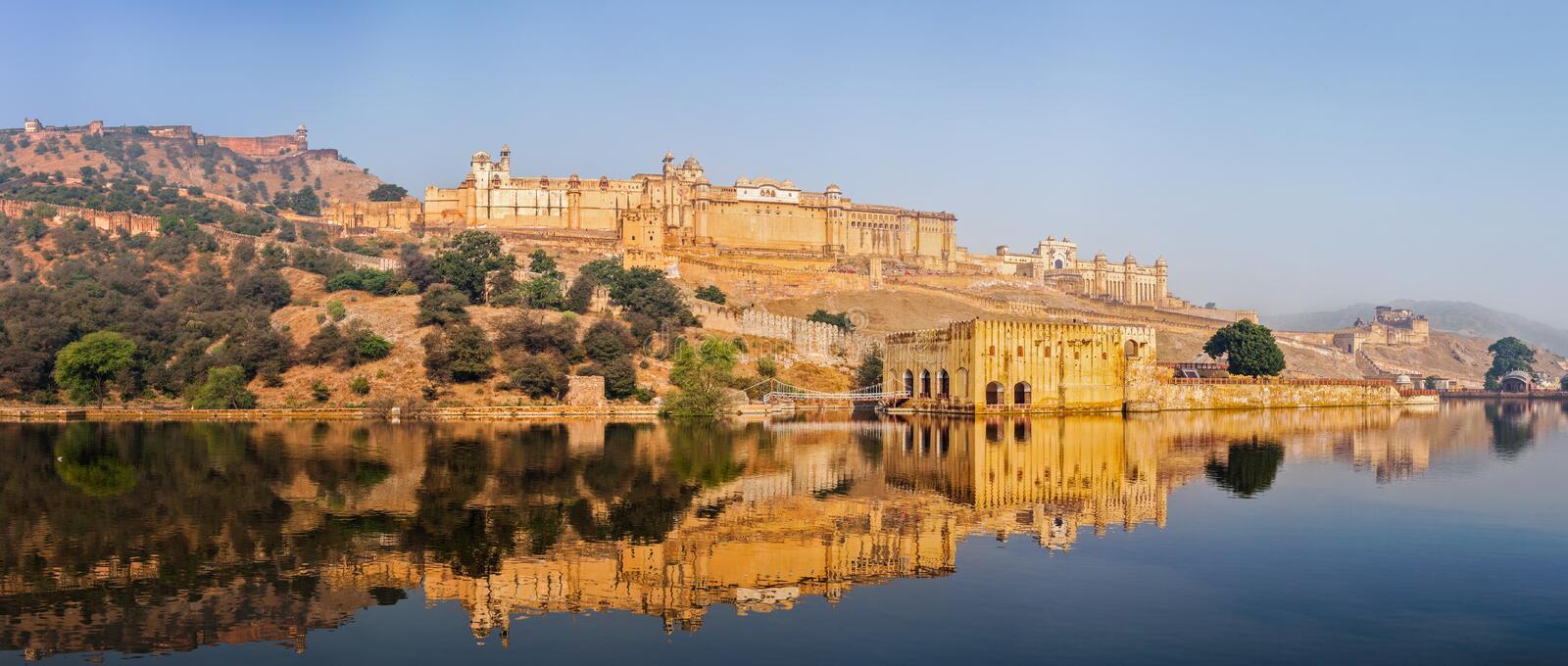
If you're planning a trip to Jaipur, the capital city of Rajasthan, India, one attraction you absolutely cannot miss is the stunning Amer Fort. Also known as Amber Fort, this historic site is a testament to the rich cultural and architectural heritage of Rajasthan. With its intricate designs, beautiful carvings, and breathtaking views, Amer Fort is truly a jewel of the city.
To help you plan your visit, we've put together this guide to Amer Fort. We'll cover its history, its features, and some tips for making the most of your time there.
History of Amer Fort
Amer Fort was built in the late 16th century by Raja Man Singh I, a trusted general of the Mughal Emperor Akbar. The fort was originally built as a palace for the Rajput Maharajas and their families, but it was later expanded and fortified by subsequent rulers. The fort is situated on a hill overlooking Maota Lake, and it was strategically designed to be difficult to attack. The fort served as the capital of the Kachwaha Rajputs until Jaipur was established as the new capital in the 18th century. The fort is located on a hilltop overlooking Maota Lake and is made of red sandstone and marble. Architecture and Design Amer Fort is a blend of Hindu and Mughal architecture.
Attractions in Amer Fort
The magnificent fort features an exquisite royal palace, bastions, sizable courtyards, numerous gates, and cobbled pathways. The area is actually a visual treat, known for its architecture, fine stonework, mirror, and intricate carvings on the walls and ceilings.
The fort is divided into four main sections, each with its own courtyard. The first section is the main entrance, known as the Suraj Pol, which leads to Jaleb Chowk. The second section is the Diwan-e-Aam, the hall of public audience, where the king would meet with his subjects. The third section is the Diwan-e-Khas, the hall of private audience, where the king would meet with his officials. The fourth section is the Sheesh Mahal, the palace of mirrors, which is adorned with thousands of tiny mirrors.
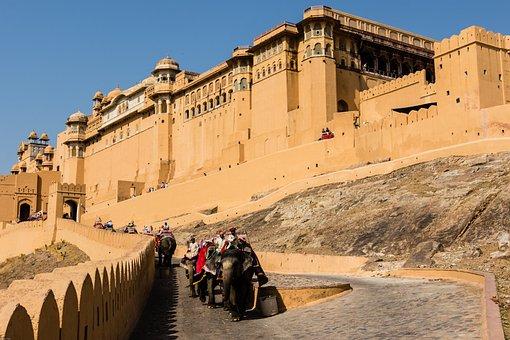
Suraj Pol
Suraj Pol is the fort's main entrance. The gate faces east and thus witnesses the first rays of sunlight every day. As a result, the gate was appropriately named Suraj Pol, or Sun Gate. The gate leads to the Jaleb Chowk courtyard. Historically, this courtyard was where victorious returning armies would display their war spoils. The courtyard bears witness to many war outcomes, both happy and sad.
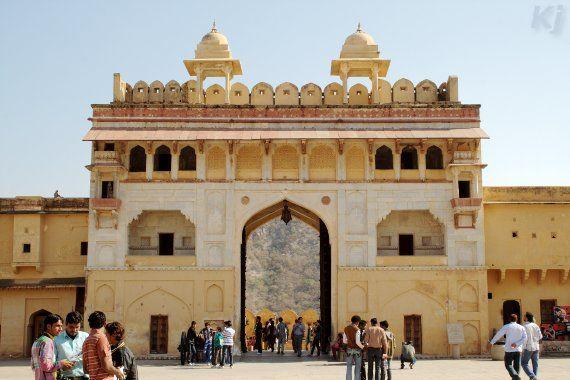
The fort complex's front courtyard is adorned with the magnificent, pillared hall of the Diwan-i-Am and the two-tiered painted gateway, Ganesh Pol.
Ganesh Pol
The main gate to the palace, Ganesh Pol, is a sight to behold. It is a majestic and well-decorated gate with beautiful carvings and paintings in natural colours. Natural pigments are derived from vegetables, flowers, spices, and stones. The majority of Rajasthani paintings are created with natural colours.
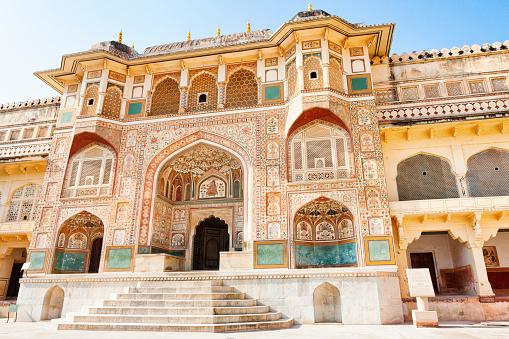
Lord Ganesh is also depicted on the gate. Lord Ganesh is a Hindu God who is known for blessing new beginnings. As a result, the gate was given that name. When the King and his royal forces returned from a battle and celebrated their victory, they entered the palace through this gate. Small windows are located directly above the gate. Suhag Mandir is the name given to them.
Sila Devi Temple
A set of stairs led us to the entrance of the Sila Devi temple from the Jaleb Chowk. Shila Devi temple is dedicated to Shakti worship. Before going out for a battle or any other business, the King is said to have always prayed to the Devi. At the temple, human sacrifices occurred as well. The temple's door is made of intricately designed silver.
Diwan-i-Aam
This is the palace's common Assembly place. It is a raised platform in the courtyard where the king would meet with his subjects and listen to their problems. The galleries have a double row of columns, each with an elephant-shaped capital on top.
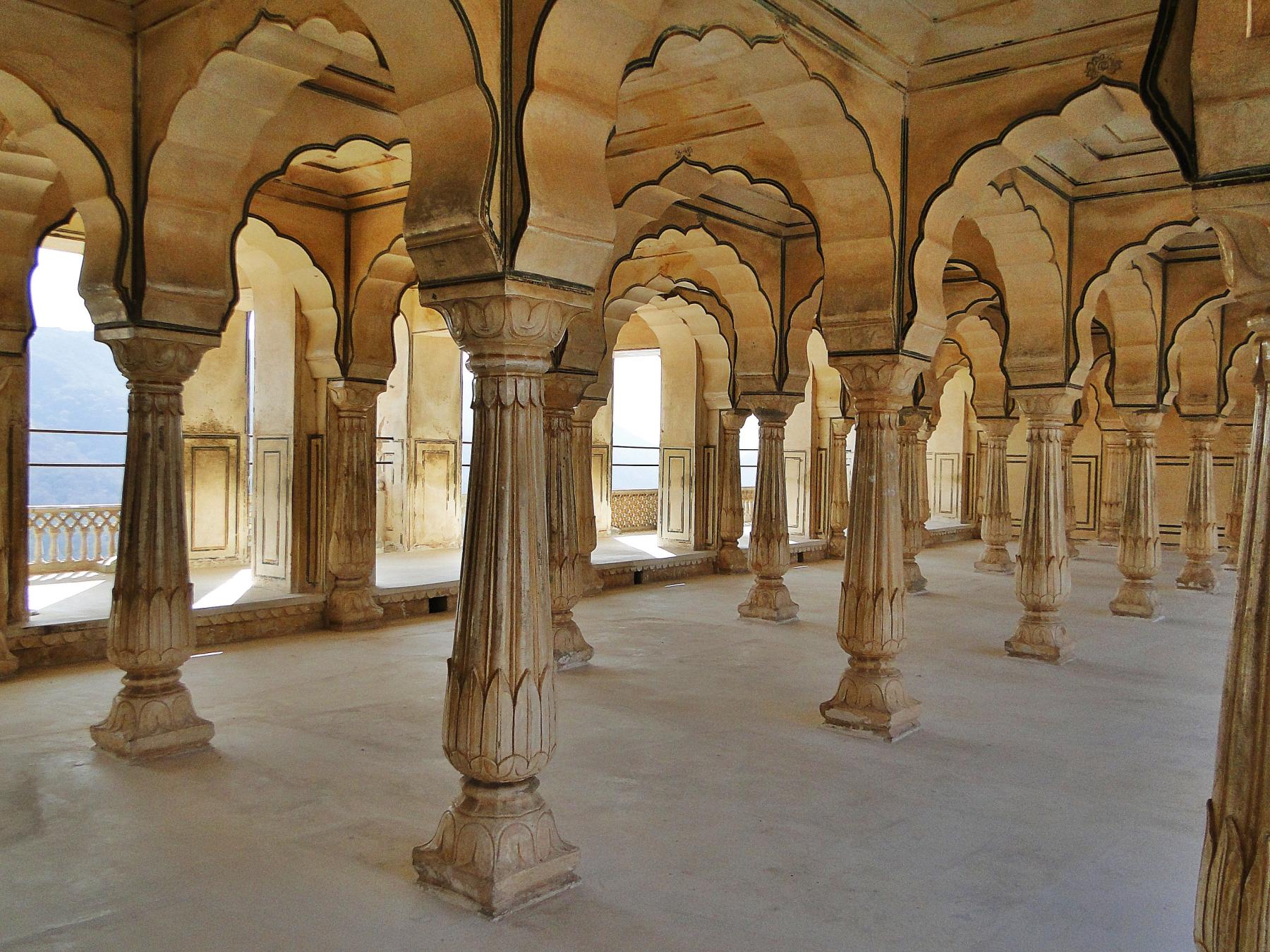
Diwan-i-khas
This is one of the three courtyards' magnificent structures. The Diwan-i-Khas, or Hall of Private Audience, and the Sheesh Mahal make up the stunning structure. The upper part of Diwan-i-Khas is known as the Jas Mandir and is decorated with intricate floral designs and glasses. Because it was built by Raja Jai Singh, it is also known as the Jai Mandir. It served as the king's private chamber, where he held private meetings. The king welcomed his special guests, who included envoys from other rulers. The interiors are adorned with mirrors and glasswork, and this hall is linked to the Sheesh Mahal. The king certainly knew how to impress his visitors!
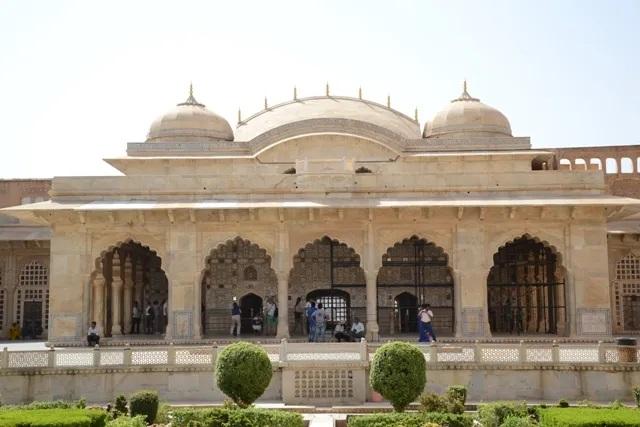
The Magic Flower is the most intriguing feature of this location. The flower is so intricately carved that by covering different parts of the flower, you can see seven different images. A fishtail, lotus, hooded cobra, elephant trunk, lion's tail, cob of corn, and scorpion, each visible from a unique angle.
In front of the Diwan-i-Khas, there is a garden designed in the Mughal architectural style. It was known as Aram Bagh or Chahar Bagh. The water that flowed in the garden was used to cool the surroundings, as it was in many Mughal architectures.
Sheesh Mahal
This is the most fascinating and magnificent part of the Amer Fort. The room is entirely made of small bits and pieces of glass that form beautiful designs. It is said that two candles are sufficient to illuminate the entire room even in the darkest of nights due to the infinite reflections created in the glass pieces. That small light is transformed into thousands of stars by the reflection.
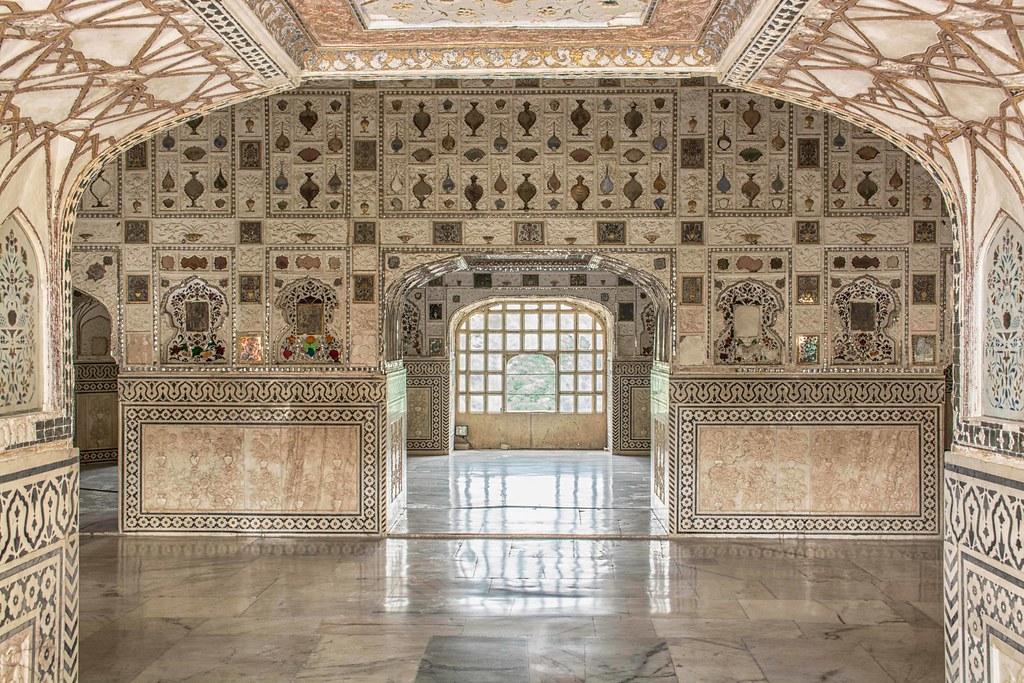
The epic film Mughal-e-Azam was undoubtedly inspired by the Sheesh Mahal.
Sukh Niwas
The Sukh Niwas, or Palace of Pleasure, is located directly across from the Dewan-e-Khas. This was the King's private quarters, where he went to rest.
Kesar Kyari
Kesar Kyari is a one-of-a-kind Saffron garden on Maota Lake, which we saw as we approached Amer Fort. It was in the royal garden that saffron was grown.
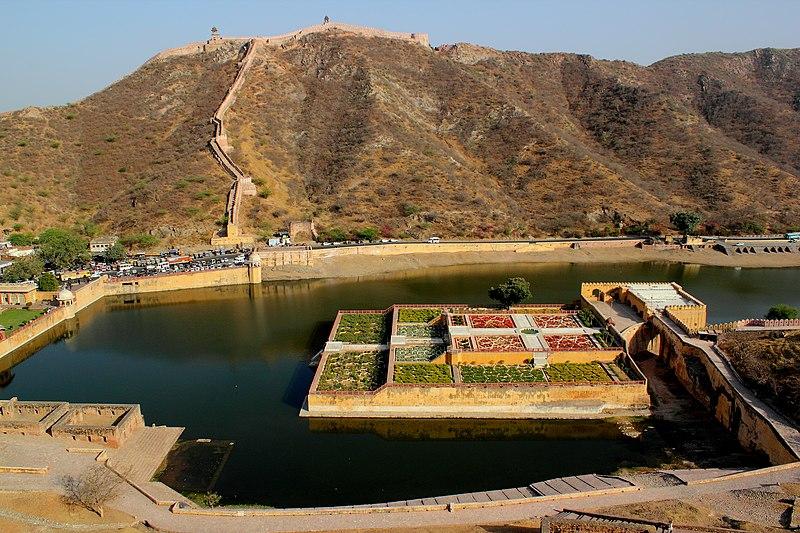
Baradari at Man Singh Palace
The famous palace built by Raja Man Singh I can be found in the courtyard's southern region. This is the fort's oldest structure as it stands today. In the middle of the courtyard, there is a pavilion surrounded by living quarters.
According to legend, the king had 12 wives, each from a different zodiac sign. As a result, there are 12 rooms on each side of Baradari. It remains to be seen whether this is true or not!
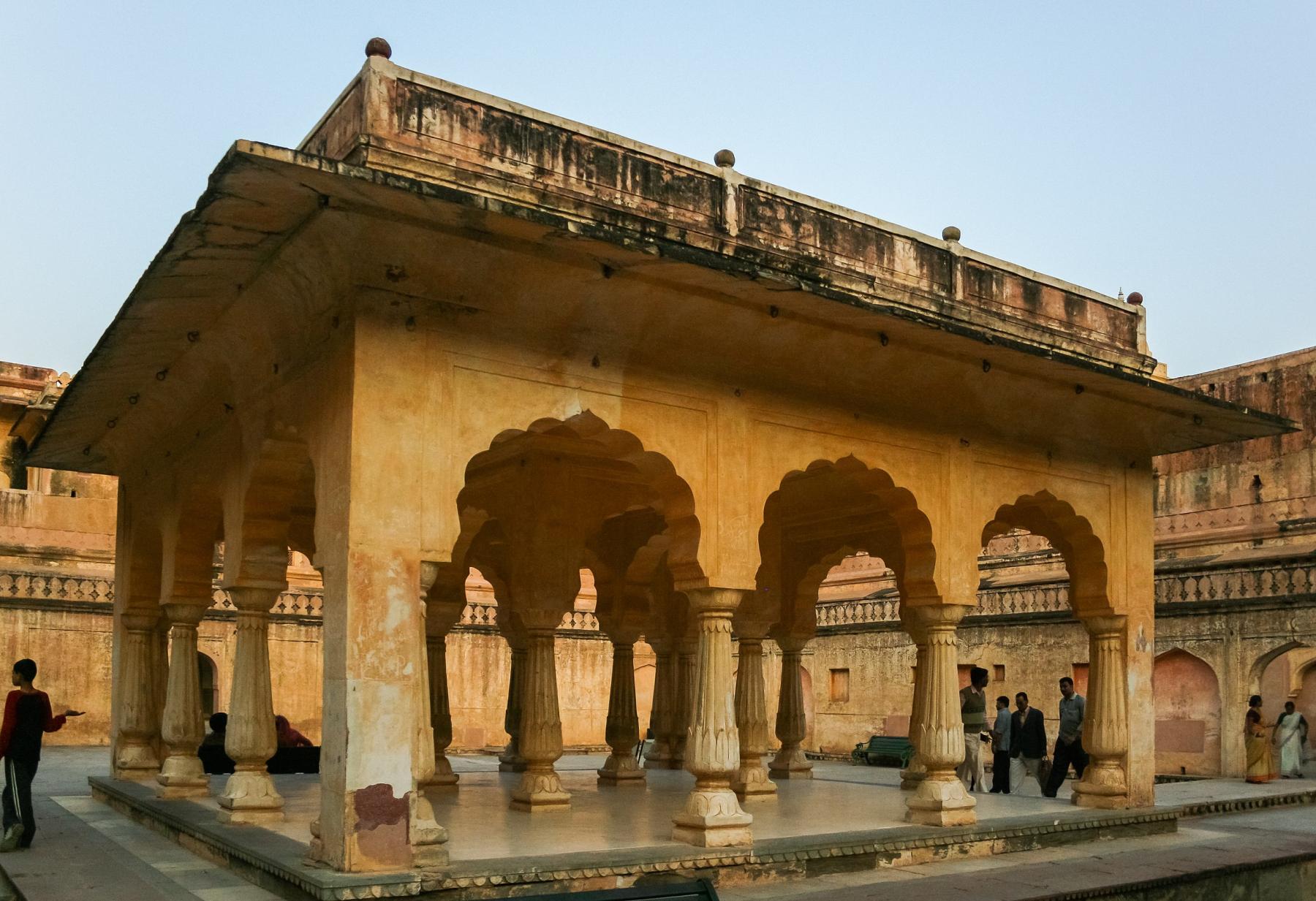
Zenana Mahal
This is the ladies' quarters, and it's its own world. Outsiders were not permitted to enter these areas of the palace. Even the palace men had limited access here. It is said that the queens' rooms were linked to the king's room via a private passage. Only the King had access to the private passage. As a result, if the king paid a visit to one of the Queens, the others would most likely be unaware.
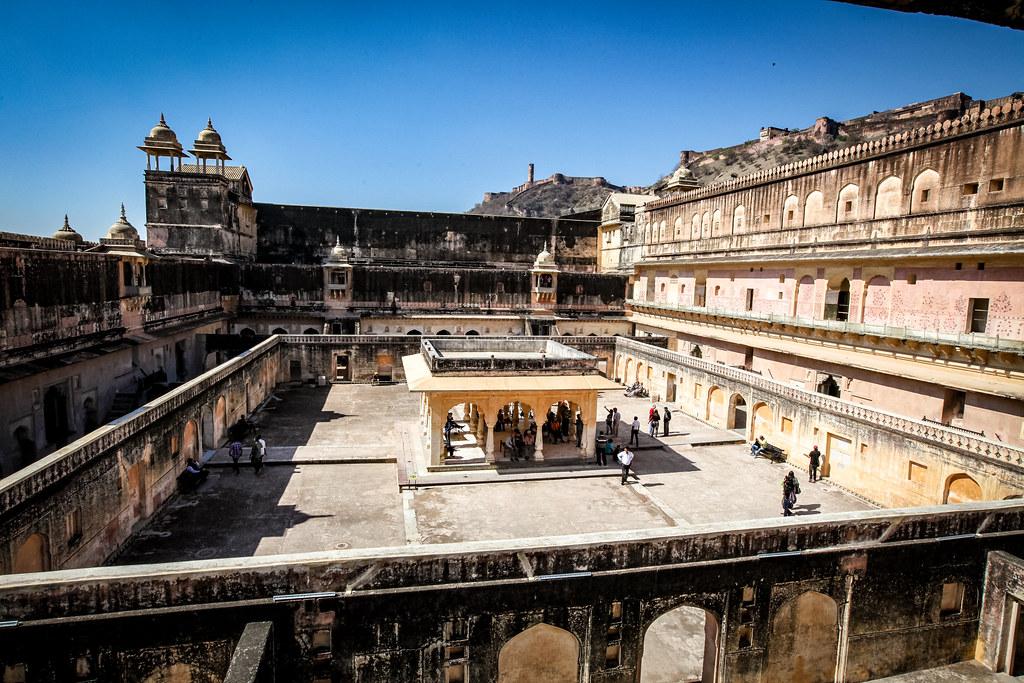
There is an exit route from here that takes us back to the main courtyard. We noticed a large vessel just before the exit. This is said to be the vessel used in the film Jodha Akbar.
How to Reach Amer Fort?
The magnificent pink and yellow sandstone fort is situated on top of a hillock in Amer, 11 kilometers from Jaipur, in front of the tranquil façade of Maota Lake. Jaipur is the capital city of Rajasthan and is well connected by flight, train, and road to all major cities in India. Amer Fort is located 12 kilometers from Jaipur's main city. To get to Amer Fort, you can take taxis, buses, and government buses.
Visiting Hours of Amer Fort:
Time: 8 a.m. to 6 p.m.
Fees for entry:
INR 25 for Indians, INR 10 for students
INR 200 for foreigners, INR 100 for students
Timings and fees for light and sound shows:
7:30 p.m. in English, INR 200 entry fee
8:00 PM in Hindi, INR 100 for entry
Travel Advice for Amer Fort
The Amer Fort is a massive structure. The limited time we had was insufficient to explore the entire area. Personally, I believe that this is a place where one should return time and again. Nonetheless, here are a few pointers to help you plan your trip to Amer Fort.
1. Amer Fort takes at least 2 - 3 hours to explore.
2. Because there will be a lot of walking, dress comfortably and wear flat shoes. I also recommend bringing sunglasses and hats because there is a lot of walking involved in open courtyards under the sun.
3. Carry water with you because there is hardly a provision of water inside the fort, Water, on the other hand, can be found in the refreshment area.
4. Visit as soon as the fort opens in the morning. After 12 p.m., the Siladevi Temple closes. Also, as the day progresses, the area becomes increasingly crowded.
5. There is an option to ride an elephant from the foothills to the fort entrance, though I personally do not recommend it. It's available until 12 p.m. The cost of an elephant ride for two people is INR 900.
6. In the evening, there is a light and sound show. If you're interested, go in the afternoon.
7. Near the fort is the Anokhi Hand Printing Museum. Mondays are still closed at the Museum.
8. Take a tour with a guide to see the sights and hear the stories. There is also an audio guide available.
9. You can also take an Amer Fort Heritage Water Walk and learn about the water system back then.
Also Read: Chokhi Dhani Jaipur: A Cultural Heaven in the Pink City